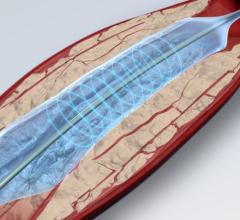
August 28, 2013 — Effective Oct. 1, Cook Medical’s Zilver PTX drug-eluting peripheral stent qualifies for new-technology add-on payments under Medicare’s hospital inpatient prospective payment system.
“This is great news for Medicare beneficiaries who suffer from peripheral arterial disease, and for U.S. hospitals that treat these patients,” said Jim Gardner, M.D., director of reimbursement and medical science officer for Cook Medical.
Zilver PTX technology had to meet three criteria to qualify for add-on reimbursement. First, a new technology must represent a substantial clinical improvement. Second, the data that Medicare uses to set payments for the new technology under the Medicare severity diagnosis-related groups (MS-DRGs) must not be available. Third, the MS-DRG payment rate that otherwise applies to the new technology must be inadequate.
The add-on reimbursement typically remains in place two to three years, at which point Medicare will determine the “permanent” diagnosis-related group assignments for Zilver PTX procedures, Gardner added. While the add-on payment is in effect, hospitals can receive up to $1,705.25 in additional reimbursement for each patient that is treated on an inpatient basis with Zilver PTX stents.
“Now that Medicare has recognized the benefits of this technology, we encourage our hospital customers to discuss similar reimbursement policies with the commercial insurance plans they contract with,” Gardner said.
This additional reimbursement is available to hospitals only for inpatient procedures. It doesn’t affect physician reimbursement, hospital reimbursement for outpatient procedures, or ambulatory surgery center (ASC) reimbursement for Zilver PTX stenting procedures performed in the ASC.
For more information: www.cookmedical.com


 September 12, 2025
September 12, 2025 









